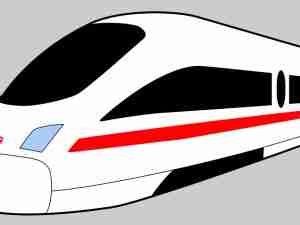Forget Helicopter Money: BOJ May Prefer to Fund Rail, Sewers
By: | Aug 28 2016 at 10:17 PM | Intermodal
Forget helicopter money. The Bank of Japan might next target financing a bit closer to the ground—trains, hospitals, power plants and sewers.
That’s the view of some analysts who say the central bank may start buying bonds of local governments and public corporations that fund such projects after its Sept. 20-21 meeting. That would stop short of direct financing of fiscal spending. The average yield on notes from the nation’s prefectures, cities and towns has dropped 19 basis points to 0.09 percent since the BOJ introduced its negative interest rate policy in January, according to a Nomura Securities Co. index.
Speculation is mounting the BOJ will ease monetary policy further after Prime Minister Shinzo Abe unveiled a 28 trillion yen ($274 billion) stimulus program. Since the central bank already buys government bonds, corporate notes and exchange-traded funds, among its few remaining options are debt in local authorities and so-called zaito institution paper.
“There’s a strong possibility that starting to buy zaito institution and local government bonds will come up for discussion,” said Hiroshi Miyazaki, an economist at Mitsubishi UFJ Morgan Stanley in Tokyo. “It would be a reasonable move for the BOJ as it would help financing flow into infrastructure investments,” such as the Tokyo-Osaka maglev train project, he said.
A spokesperson at the BOJ declined to comment.
Zaito agencies and local authorities have 93 trillion yen of securities, only about 10 percent the size of outstanding Japanese government bonds, according to data from the Japan Securities Dealers Association.
The BOJ may target the notes, according to Toshiyasu Ohashi, the chief credit analyst at Daiwa Securities Group Inc. in Tokyo.
“If the central bank starts buying them, investors will be able to sell them to the BOJ at higher prices,” he said. That could increase the amount of securities in the market trading at negative yields, leading to a rise in the number of investors struggling to lock in returns, he said.
Those downsides could be tolerable for BOJ Governor Haruhiko Kuroda as he looks for new steps to get more money flowing in an economy that has only grown half of the time since he launched his stimulus in April 2013. Consumer prices have fallen for five straight months to July. While benchmark yields tumbled to a record low of minus 0.3 percent last month, they have since retraced two thirds of that.
Money Flowing
On Saturday in Jackson Hole, Wyoming, Kuroda reiterated a pledge to boost monetary stimulus if needed. He said in an interview recorded in June with BBC Radio 4 program that at that stage there was “no need and no possibility for helicopter money.” The term refers to a situation in which the government would issue non-marketable perpetual bonds with no maturity date and the Bank of Japan would directly buy them.
Introducing purchases of zaito institution bonds would echo previous steps. Such securities lack government guarantees and are sold by organizations including the Development Bank of Japan and the Japan Expressway Holding and Debt Repayment Agency. The BOJ already holds a separate category of debt, known simply as zaito notes, which are guaranteed and issued directly by the government.
“It may not be great for investors,” said Tadashi Matsukawa, the Tokyo-based head of fixed-income investment at PineBridge Investments Japan. “But purchasing zaito institution securities would be one idea for getting more money flowing through the economy.”







